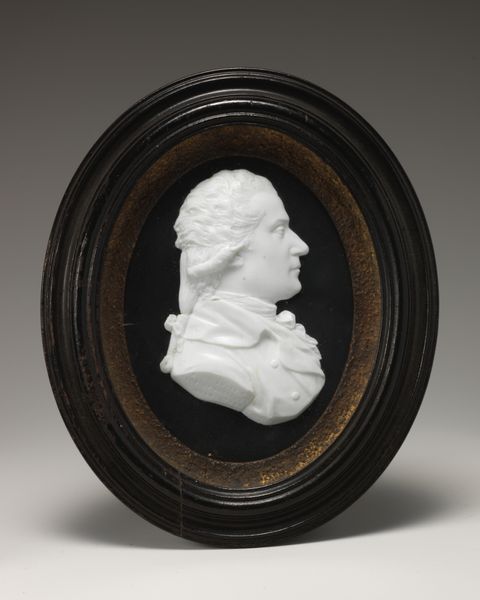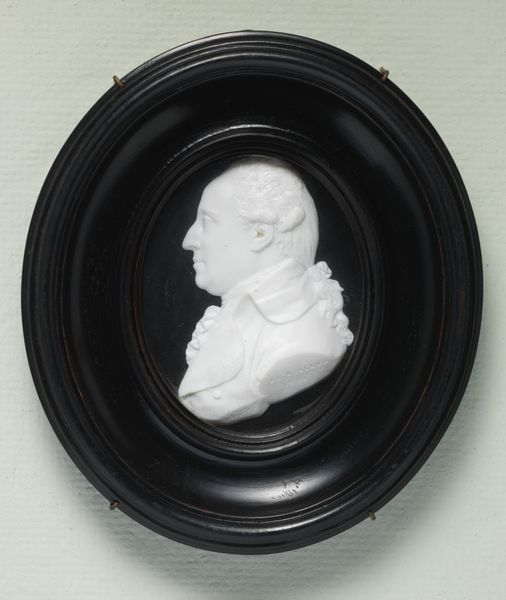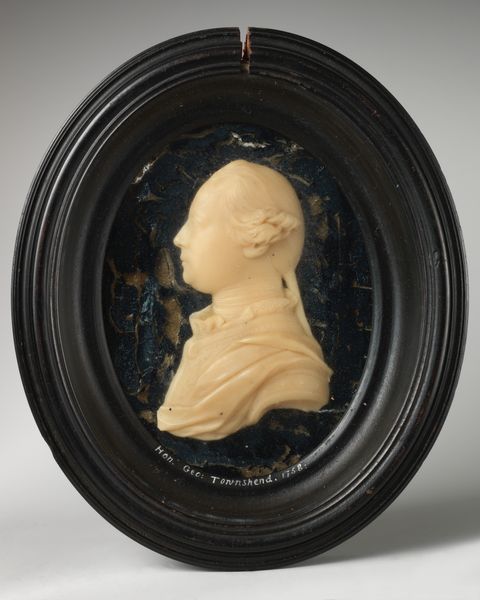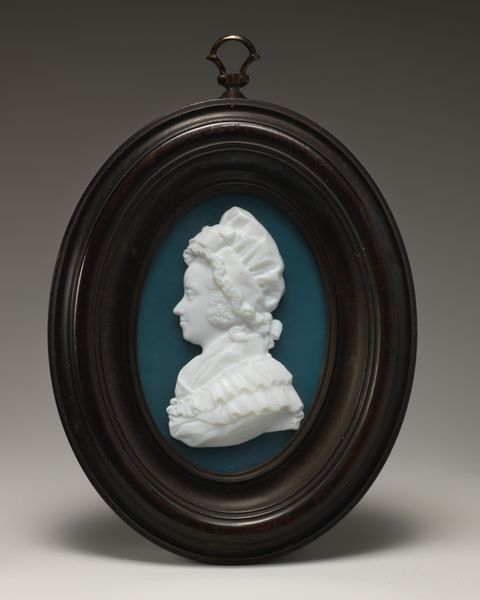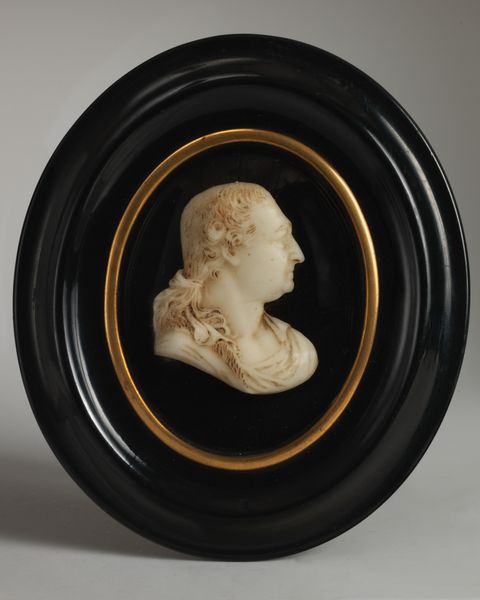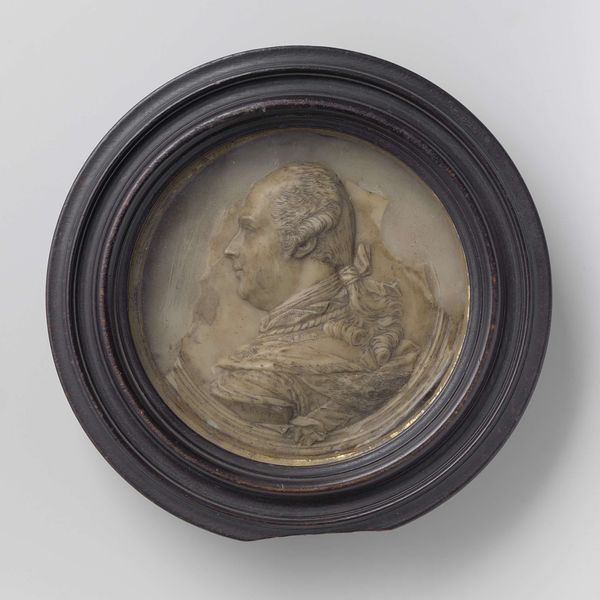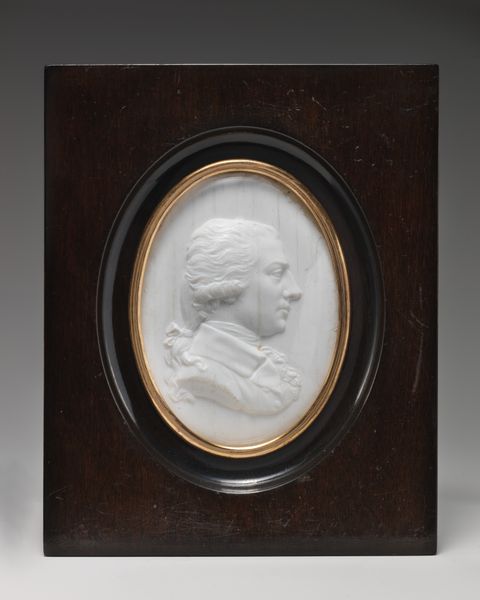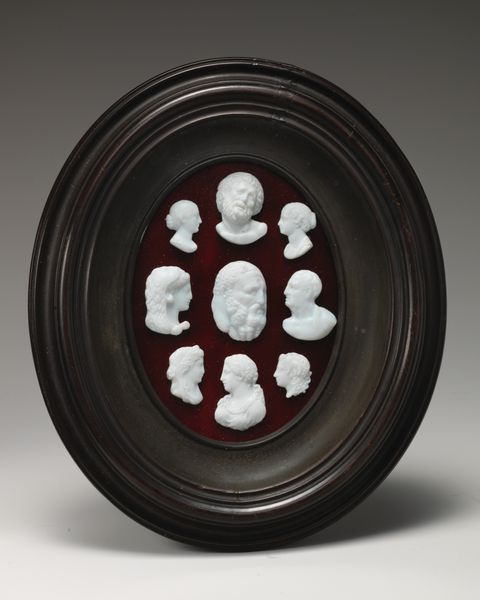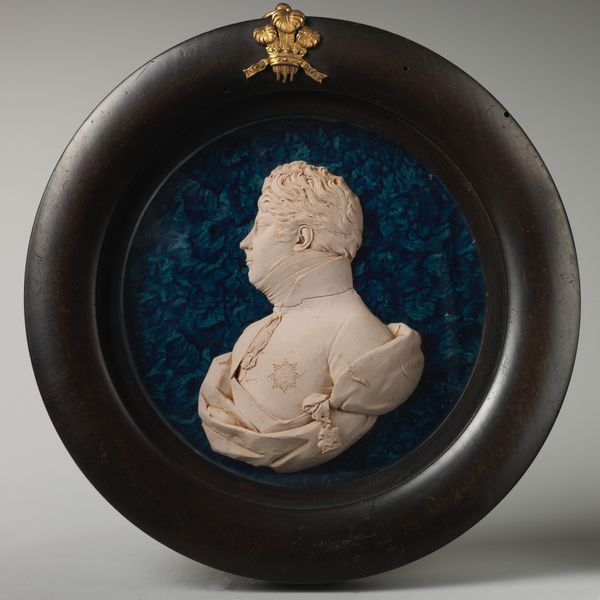
Augustus, Admiral Viscount Keppel (1725–1786) 1775 - 1785
0:00
0:00
glass, sculpture
#
portrait
#
neoclacissism
#
glass
#
sculpture
#
decorative-art
Dimensions: 7 1/8 × 6 in. (18.1 × 15.2 cm)
Copyright: Public Domain
Curator: Here we have James Tassie’s “Augustus, Admiral Viscount Keppel (1725–1786),” crafted between 1775 and 1785. Editor: The immediate impression is quite striking; it possesses a cool serenity due to the stark contrast and smooth materiality, despite the apparent limitations of the medium. Curator: Tassie's use of glass paste, a relatively humble material, elevated portraiture to something reproducible, almost democratic, by side-stepping the elitism associated with marble or oil painting. It's fascinating how he mastered this industrializing craft. Editor: Agreed, but I am drawn to how Tassie deploys that medium to construct a powerfully legible image. The stark profile set against the black ground isolates the essential forms; note the Neoclassical elegance achieved through simplification and balance. Curator: The choice of portraying Keppel, a figure embroiled in political controversies, suggests Tassie engaged with the social climate. Consider the Wedgwood firm that produced abolitionist cameos —Tassie may similarly have embedded meaning in his artistic choices. Editor: Indeed. We cannot ignore the larger political landscape in the composition, but first I notice how the purity of the white glass against the black accentuates Keppel's silhouette, drawing the eye to his noble brow and resolute jawline, speaking to classical ideals. Curator: Tassie’s process involved grinding glass, adding pigments, and firing—each step impacting the final look. Did he personally oversee every stage or rely on workshop assistants? The answer shifts how we perceive authorship and artistry itself. Editor: These historical aspects are insightful, no question. Yet, let's also acknowledge how Tassie successfully distilled Keppel's essence into a timeless, almost mythical form through elegant shapes. The piece itself conveys both power and intellectual grace. Curator: So, when examining the piece, it prompts reflections on the value ascribed to portraiture during an era undergoing massive shifts in production and class structures. Editor: And it certainly invites a contemplation of how skillful simplification within defined aesthetic constraints can result in enduring and eloquent artistic expression.
Comments
No comments
Be the first to comment and join the conversation on the ultimate creative platform.
